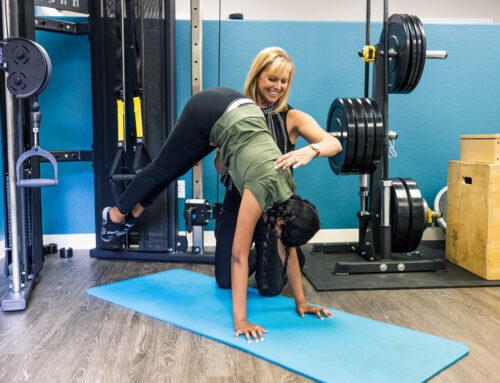Reno physical therapist, Sarah Martinez specializes in working with prenatal women to prepare for delivery, and postpartum women to recover after childbirth. A woman’s body goes through many changes during pregnancy and often times there is significant recovery needed to restore the pelvic floor and the abdominal muscles. Sarah is specially trained in breathwork to help reengage the diaphragm and heal diastasis recti, which is the separation of stomach muscles as a result of a growing fetus.
Sarah also works with pregnant patients who may be experiencing back pain, fatigue, sciatica pain, swelling, and leg cramps. The prenatal physical therapy Sarah provides helps patients gain endurance and strength to support their growing body and relieve pain and fatigue. Sarah also works with patients to improve posture and breathing, and gives them daily exercises that alleviate the negative symptoms of pregnancy.
“I find working with women at the childbearing phase of life very rewarding,” Sarah says. “Having that support and coaching during a time of such significant change really helps them prepare for delivery and heal quicker after they have their baby.”
Pelvic Floor Issues After Childbirth
Many women develop a pelvic floor condition after delivery, regardless of how they gave birth – natural, c-section, with or without drugs, etc.. Sarah recommends all new moms come in for an evaluation six to eight weeks after giving birth to create a plan for postpartum healing. But even if it has been years since a woman has given birth, she may still be experiencing postpartum issues but not know they are related.
“I see women who have teenage kids and have chronic issues with incontinence that are related to postpartum,” Sarah says. “Any woman who has ever given birth is postpartum, regardless of timeline. If they have a weak or tight pelvic floor it can cause lots of issues that they may not event consider related to a past pregnancy.”
Your pelvic floor is a “sling” of muscles (think of a small hammock) that runs between the pubic bone in the front, and the tailbone at the back. A woman’s pelvic floor muscles support her uterus, bladder, and colon. Oftentimes you will hear “tight” or “weak” when referring to the pelvic floor. This is a misnomer. Both can be weak. Tight is not the same as strong. Tight means there is a lot of tightness and shortening of muscles that need to be relaxed and reintegrated into the core to work properly.
Healing Diastasis Recti with Breathwork
Additionally, Sarah works with moms who are experiencing diastasis recti. A good percentage of women need support to bring the abdominal muscles back into place after they have separated to make room for baby.
“Both diastasis recti and pelvic floor issues are a whole-body problem,” Sarah says. “The most effective recovery exercises for both are proper breathing techniques. I work with new moms to retrain their breathing system to get the diaphragm back on board and engage with the pelvic floor.”
Front Body Breathing
Sidelying Breathing
Back Body Breathing
These breathing exercises also helps to fire the abdominal muscles to get them engaged. If the diaphragm does not fully function, then the abdominal muscles can’t either because it is all connected.
“I want women to know they don’t have to ‘live with it’, whether that is chronic UTIs, incontinence, pain during sex, or any other issue,” Sarah says, “there is help and these are real issues with real solutions.”
Having the support and expertise of a physical therapist who specializes in prenatal and postpartum can help women restore their comfort and health for the long-term. Sarah is currently getting certified as a Postpartum Corrective Exercise Specialist (PCES), giving her even more tools to rehabilitate postpartum women after giving birth.





